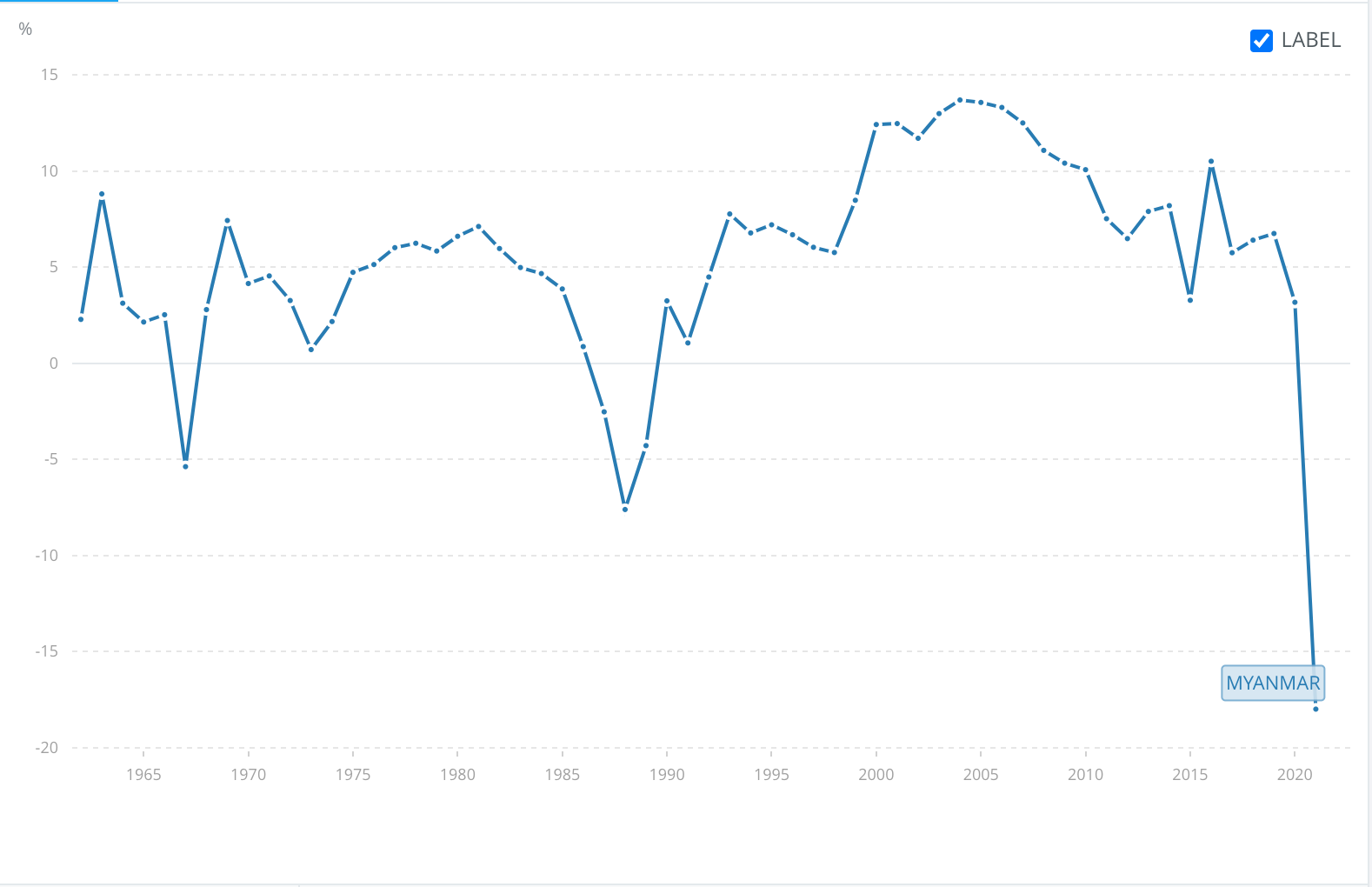Around 40 per cent of Myanmar’s 55 million population, or approximately 22 million people, have dropped into poverty less than 18 months after last year’s coup, reaching a poverty rate that Myanmar has not seen for at least 15 years, according to the latest report from the World Bank.
Until the coup, Myanmar had achieved significant success in poverty reduction over the last decade. In 2017, Myanmar had a poverty rate of 24.8 per cent, down from 32.1 per cent in 2015 and 48.2 per cent in 2005, according to the United Nations (UN).
But the World Bank’s semiannual economic monitor, which was released on Thursday, reveals that nearly a decade of progress on poverty has been undone by the military takeover.
The report stated that poverty is estimated to have doubled compared to March 2020, with around 40 per cent of the population living below the national poverty line in 2022. As defined by the UN Development Programme, living below the poverty line in Myanmar means existing on under 1,590 kyats ($0.86) a day.
“Inequality is estimated to have worsened, with those already poor falling into deeper destitution,” noted the World Bank.

Last year, Myanmar’s annual GDP growth descended to the worst point since 1962 with an 18 per cent contraction, according to bank estimates. The World Bank stated that GDP is expected to grow three per cent in the fiscal year ending in September 2022.
Beyond the limited projected growth, with an absence of a substantial rebound, GDP in 2022 will still be around 13 per cent lower than in 2019, meaning that livelihoods and coping mechanisms will continue to be severely strained, added the global financial institution.
“This will continue to test the resilience of the Myanmar people, with household incomes declining and coping mechanisms against food insecurity and poverty increasingly under strain amidst ongoing internal conflict,” said Mariam Sherman, the World Bank Country Director for Myanmar, Cambodia and Lao PDR.
It forecast consumer prices to jump 15 per cent this fiscal year.
The World Bank said in the Thursday report that while surging inflation, dollar shortages and elevated levels of domestic conflicts pose challenges, recent policy shifts have added to the challenges for businesses.
Since last year’s coup, Myanmar’s economy has been in a downward spiral, with major international investors fleeing the country, banks barely functioning and inflation rising amid daily clashes between regime troops and anti-junta forces across the country. The military regime has aggravated the situation by imposing foreign currency and trade regulations, wreaking havoc on import and export markets and sparking fuel shortages, even in the major commercial centers of Yangon and Mandalay.
The World Bank said the balance of payments situation is of growing concern, with US dollar shortages already limiting the availability of several imported products, including fuel. Elevated levels of conflict in many areas of the country are expected to continue to constrain productive activity, it added.
“As a result, a return to pre-pandemic levels of economic activity is unlikely in the near term, in sharp contrast to the rest of the East Asia and Pacific region, where GDP in all large countries is estimated to have recovered to above 2019 levels or is projected to do so in 2023,” the World Bank added.

















